By Diana Rodriguez
Liberty Wildlife Intern
A common sight in Arizona, Saguaro Cacti stand stall against the desert landscape, but did you know these cacti giants have an important relationship with the Gila Woodpecker that also benefits other species in their ecosystem?
In nature, there are a variety of unique interactions and relationships that occur between different species, many of which we may not even notice unless we take a closer look. The Saguaro Cactus and Gila Woodpecker have a mutualistic relationship. This is a type of symbiotic relationship in which both species benefit from their shared interactions.
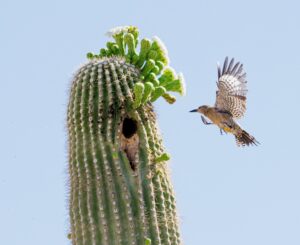 To start, the Gila Woodpecker uses its specially adapted beak to excavate cavities into the thick stems of a Saguaro cactus. Once a cavity is created, they use it to nest, seek protection from predators,and the cactus tissue serves as insulation to escape extreme temperatures. From the outside, it may seem like only the Gila Woodpecker is benefiting while the Saguaro is being negatively affected; the Gila Woodpecker receives shelter while the Saguaro is left with holes in its flesh. Despite this perception, their relationship is much more complex than what it seems.
To start, the Gila Woodpecker uses its specially adapted beak to excavate cavities into the thick stems of a Saguaro cactus. Once a cavity is created, they use it to nest, seek protection from predators,and the cactus tissue serves as insulation to escape extreme temperatures. From the outside, it may seem like only the Gila Woodpecker is benefiting while the Saguaro is being negatively affected; the Gila Woodpecker receives shelter while the Saguaro is left with holes in its flesh. Despite this perception, their relationship is much more complex than what it seems.
How does the Saguaro benefit from this interaction? First off, the cactus is not negatively impacted from the cavities that Gila Woodpeckers create. This is due to the fact that they make the holes in between the woody ribs and epidermis in older parts of the stem, so no damage is done. Furthermore, the Saguaro cactus seals off the hole from the rest of the plant by making a layer of scar tissue called callus. The Gila Woodpecker benefits the Saguaro by eating insects that could harm the plant and eating diseased plant tissue.
There are many positive effects that are produced beyond the scope of this mutualistic relationship. Because Gila Woodpeckers abandon their old nesting sites and create a new one each year, they allow other Saguaro Cacti to benefit from their interactions while also opening up a new nesting site for other birds such as elf owls, sparrows, and kestrels. Since these secondary tenants cannot create the cavities themselves, many rely on the abandoned nests of Gila Woodpeckers for shelter. This mutualistic relationship between the Saguaro and the Gila Woodpecker proves to be a great example of how interactions between species not only benefits those involved, but the ecosystem as a whole.
Kid Stuff
 Nurturing Nature
Nurturing Nature
By: Carol Suits
Liberty Wildlife Volunteer
It’s summer and a great time to get outside to help nature! The Superhero kids have done an amazing job by reducing and recycling, picking up litter and becoming super inspectors discovering ways to save and not waste water. Summer is also a great time to read a ton of great books. Kid Stuff has gathered some books about water you might enjoy as well as a few others to look at. Enjoy!
The Superhero club will be meeting again in the Fall. To learn more about the club email Carols@libertywildlife.org.
Did A Dinosaur Drink This Water? By Robert E. Wells (Author, Illustrator) Grades 1 – 4
In this fascinating book about the water cycle, readers will find that while it might be hard to imagine, it’s really true!

This link is a read along video of the book. https://www.youtube.com/watch?v=oqnjfPl9U_E
One Well: The Story of Water on Earth By Rochelle Straus (Author), Rosemary Woods (Illustrator) Grades 2 – 4
All water is connected. Every raindrop, lake, underground river, and glacier is part of a single global well. Water has the power to change everything — a single splash can sprout a seed, quench a thirst, provide a habitat, generate energy, and sustain life. How we treat the water in the well will affect every species on the planet, now and for years to come. One Well shows how every one of us has the power to conserve and protect our global well.
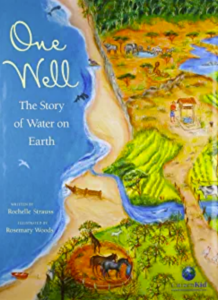
You Wouldn’t Want to Live Without Clean Water By Roger Canavan (Author), David Antram (Illustrator) Grades 3 – 6
(Part of the “You Wouldn’t Want to Live Without…series) How would you cope in a world without water? Clean water is far, far more important than you might think! This book features full-color cartoon-style illustrations and hilarious speech bubbles to heighten interest and is bursting with surprising facts about this essential life source.

I Can Save the Ocean! The Little Green Monster Cleans up the Beach By Alison Inches (Author), Viviana Garofoli (Illustrator) Preschool – grade 2
Max the Little Green Monster loves the outdoors, especially the beach! But Max and his friends don’t like cleaning up after themselves and after a picnic on the shore, they leave a big mess behind and go scuba diving. When he learns how his carelessness and littering may have harmed the beautiful ocean, the Little Green Monster goes on a quest to clean and protect the beach and finds out what it means to be environmentally green.
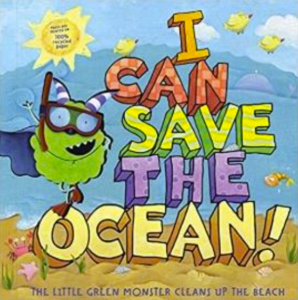
Why Should I Save Water? By Jen Green (Author), Mike Gordon (Illustrator) Preschool – grade 2
Children will gain a whole new understanding of the world we live in with this fun, first look at our most precious natural resource, water. In this book, kids are told about dozens of ways in which they and their families can avoid wasting water.
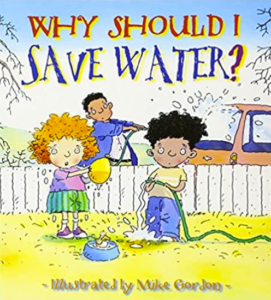
Other interesting books to read.
The Hike By Alison Farrell (Author) Preschool – grade 1 A nature book for kids. A field guide for young outdoor enthusiasts with everything from instructions on how to make a leaf basket for foraged berries to scientific labels and tips for identifying animal tracks, constellations, and moon phases.
The Street Beneath My Feet By Charlotte Guillain (Author), Yuval Zommer, (Illustrator) Grades K – 3
A boy walks down a noisy city street, his red sneakers pounding the pavement, and he wonders, “What’s going on deep in the ground?” Level by level, he describes what can be found beneath his feet. Beginning with cables and pipes, earthworms, and insects.
Marshes and Swamps! With 25 Science Projects for Kids By J.K. ‘Sullivan (Author), Tom Casteel (Illustrator) Grades 3 – 5 Review: Curtis J. Richardson, Professor and Director Duke University Wetland Center – “A wonderful book that should bring children into the magical world of wetlands”
The Fascinating Engineering Book for Kids: 500 Dynamic Facts! By Dr. Jacie Masly (Author) Grades 3 – 6
Did you know that computer chips can be thousands of times smaller than a grain of sand? Or that whale fins inspired the wind turbine?
Puzzles!
https://www.jigsawplanet.com/?rc=play&pid=0240c9f40b7b
https://www.jigsawplanet.com/?rc=play&pid=02903daf1caf
https://www.jigsawplanet.com/?rc=play&pid=15dfb7c68d07
The Power of Water
By: Gail Cochrane
Liberty Wildlife Volunteer
There exists on earth a power as profound as the sun. Here in the desert, its ways are written in deeply carved canyons that flow through the landscape. It snakes across the desert floor in arroyos crowded with green. It secrets itself underground in vast lakes, where it is often harnessed to sustain heavy populations of humans. This power is water, and here in the Sonoran Desert, it means life.
During the magical season called the monsoon, water first appears as masses of white clouds boiling upward from the horizon, rising on thermals generated on the superheated desert floor. Water sometimes dances in the sky in beautiful and ephemeral veils called virgas, precipitation held by air with never a chance to reach the land.
Moisture descends to the desert floor in the form of humidity and awakens plants, insects, amphibians, and mammals from their heat induced stupor. The biotic community responds to the monsoon with a flush of plant growth and a flurry of mating and dispersal for the animals. Keystone species such as paloverde, ironwood and mesquite trees are galvanized to generate new growth. Cacti call on all of their ingenious adaptations to gather and sequester precious moisture to last them through months of drought.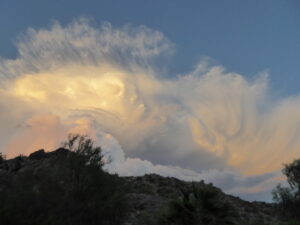
Annual plants such as summer poppies, devil’s claw and morning glories may be insignificant in size but are substantial in number. With increased moisture in the air, they sprout abruptly, flowering and producing seeds that litter the desert floor, providing sustenance for birds and mammals. Desert perennials such as busera, desert lavender and brittle bush have dropped all of their leaves to survive June’s heat, but spring back to life as humidity inspires new shoots and leaves.
Insect life cycles play out in the monsoon season in the air and on the ground. Wings sprout on harvester ants so they may fly to find mates, and Apache cicada adults emerge from their brittle exoskeletons to the same purpose. Gaudy dragonflies hover near tender green growth. Monarch, queen and fritillary butterflies emerge. Myriads of insects flourish just beyond our ken. Gnats swarm at sundown, noted only by swooping bats. Insects and spiders creep and fly through the landscape, forming the primary protein source for growing families of fledgling birds, lizards, snakes and small mammals. They in turn become food for hawks, owls and coyotes.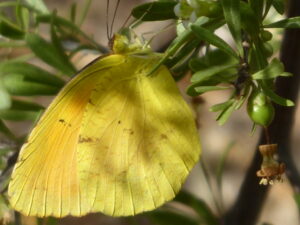
In good years, rain comes. Water unleashes its power, cascading across the landscape, coursing towards low ground. Accompanied by booming thunder and livid spears of lightning, rain pounds the earth with its drumbeat of life-giving force.

